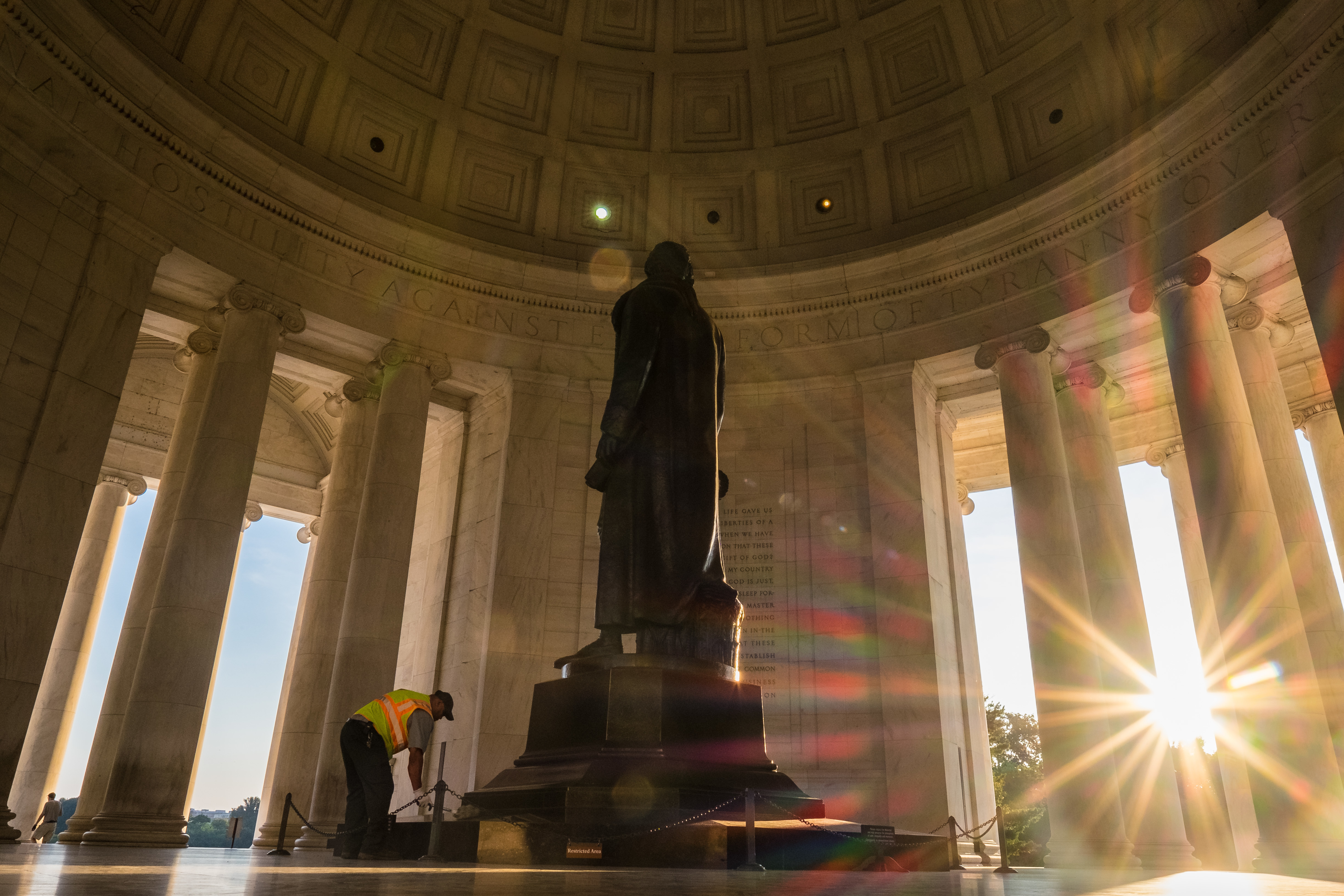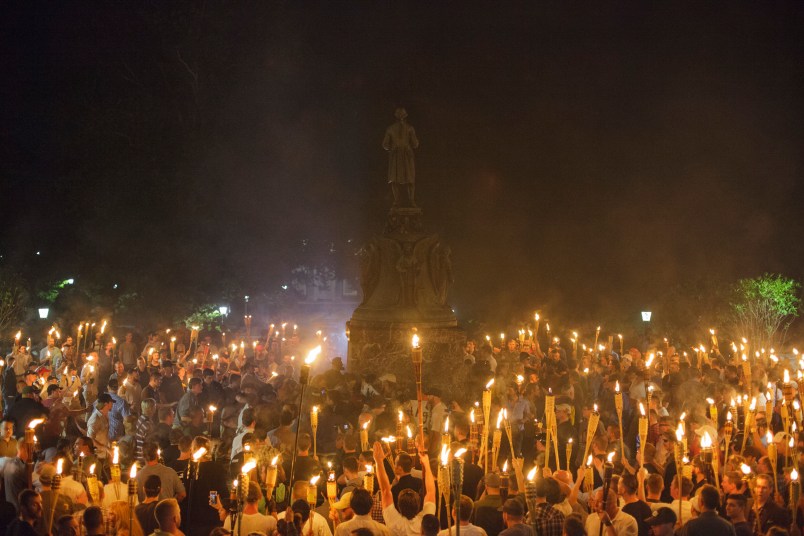Debates over public memory and the valorization of history are frequently complicated and politically vexed. But on the margins, in extreme cases, they are often pretty straightforward. For any subject of controversy, the first question we should ask is: What is the person known for? How did they earn a place in our collective public remembrance?

As Thomas Jefferson’s involvement in slavery has become increasingly difficult to dismiss as simply a product of his times and as his use of one of his own slaves as his lifelong concubine has become more surely confirmed as fact, Jefferson’s place in the national pantheon has come in for increasing criticism. In his case, we have a mixed ledger. He is the author of the Declaration of Independence, the prime driver of the Northwest Ordinance, a significant anti-slavery document, Secretary of State, President. He was also a lifelong slaveholder with all that entailed. With Jefferson you have numerous acts which are high points in our national story joined with an integral involvement with our greatest national shame. This will be a long public discussion.
What is Robert E. Lee known for? This is what I mean by the margins of the debate. Lee is known for one thing: being the key military leader in a violent rebellion against the United States and leading that rebellion to protect slavery. That’s it. Absent his decision to participate in the rebellion he’d be all but unknown to history. He outlived the war by only five years. There’s simply no positive side of the ledger to make it a tough call. The only logic to honoring Lee is to honor treason and treason in the worst possible cause.

Lincoln and his war cabinet had little question what Lee deserved. Look at Arlington National Cemetery. That’s Lee’s plantation. The federal government confiscated it and dedicated it as a final resting place for those who died defending the United States. It is a solemn, poetically rich, final and ultimately righteous verdict on his role in our national life. The entire project was very much by design: to punish Lee and shame him in public memory for betraying the United States. (During the Civil War, a Freedman’s Village was also established on the estate for ex-slaves making their transition to freedom.) The generals, particularly Union Quartermaster General Montgomery Meigs who spearheaded the effort, wanted to be certain the Lees would never be able to reclaim their estate. Making it into a hallowed national cemetery was a good way to accomplish that.
But it went beyond that. Meigs, himself a southerner but a staunch unionist, went to great lengths during and after the war to bury bodies as close to the Lees’ mansion as possible to make it uninhabitable. In August 1864, on Meigs’ orders, 26 bodies were buried around Mrs. Lee’s rose garden, only a few yards from the mansion. Just after the war, when a Lee relative speculated on ways to reclaim the estate and remove the bodies, Meigs went further and created a tomb for unknown Civil War dead in the mansion’s rose garden, interring the remains of 2,111 unknown soldiers in a sealed vault.
Meigs’ ultimate victory came in 1882 when Lee’s son sued to reclaim his family estate. The Supreme Court ultimately ruled in Lee’s favor and awarded him the mansion and its 1100 acres. But by this time Arlington contained the graves of more than 6,000 union soldiers. The estate’s future was a fait accompli beyond the Supreme Court’s reach. Lee sold the estate to the US government for $150,000.

What is little discussed today is that the North and the South made a tacit bargain in the years after the Civil War to valorize Southern generals as a way to salve the sting of Southern defeat and provide a cultural and political basis for uniting the country with more than military force. That meant the abandonment of free blacks in the South after the mid-1870s. It is important to see this not only as the abandonment of the ex-slaves of the South. It is difficult, but necessary, to pull away the subsequent history to realize that it was entirely possible in the aftermath of the Civil War that the US would be condemned to perpetual warfare, insurrection and foreign intervention. But if the opposite, the United States that went on to become a global superpower, is what was gained it was gained at a terrible price and a price paid more or less solely by black citizens.
However one judges that past, knowing its full history leaves no reason or rationale for continue the valorization of Lee. He was a traitor and a traitor in a terrible cause. That is his only mark on American history. Whether he was a personally gentle man, nice to his pets or a good field general hardly matters.
Even this though leaves the full squalidness of Lee’s legacy not quite told. There is the Lee of the Civil War and then the mythic Lee of later decades. Today the battle over Lee’s legacy is mainly played out over the various statues depicting Lee which still stand across the South. The notional focus of this weekend’s tragic events in Charlottesville was a protest over plans to remove a Lee statue. But those statues don’t date to the Civil War or the years just after the Civil War. In most cases, they date to decades later.
The historical chronology is important to understand. Reconstruction is generally dated from 1865 to 1877 when the federal government withdrew federal troops and allowed the restoration of so-called ‘home rule’ in the South. But black political power and biracial political coalitions didn’t disappear overnight. Though the sheet anchor protecting black citizenship was withdrawn, it took the better part of a generation for what we now recognize as the Jim Crow system to become firmly entrenched throughout the South. To note but one example, the judicial cornerstone of Jim Crow, ‘separate but equal’, only became the law of the land with Plessy v Ferguson in 1896.

The statuary which is only beginning to come down in our day dates largely from this era and constituted a celebration and affirmation of this victory. Not the victory of the Civil War, which was of course a defeat, but the sectional victory to define the post-war settlement.
Consider some dates: Lee Circle in New Orleans, 1884; Lee Statue on Monument Avenue, Richmond, Virginia, 1890; Robert E. Lee Monument (Marianna, Arkansas), 1910; the Robert Edward Lee sculpture in Emancipation Park, Charlottesville, Virginia, commissioned 1917, erected 1924. All of these statues date not from the Civil War Era but from the decades of the establishment of Jim Crow, to celebrate the South’s success establishing an apartheid system on the ruins of the Antebellum slave South. A statue of Lee in uniform, mounted on a horse in a southern town square has only ever had one meaning: white supremacy. These statues didn’t come to be associated with racism and Jim Crow only after the Civil War had receded into memory. They were created, from the start, to mark and celebrate the foundations of Jim Crow, uncontested white rule. More mythically, but to the same end, they were built to glorify a vision of the South in which her black citizens had no place.
It has always been a canard to claim that anyone is banishing history with these changes. But public memory isn’t simply history. It is a public recitation, often written onto the landscape, about what we revere and what we regret about who we are and what we come from. None of this is to say that Lee’s battles aren’t of interest. Nor is it to say what Lee was like as a private person. But neither is why he is celebrated in cast metal statuary across the South. There’s one reason. And by any measure for us today it is a bad reason. It is not even close.






